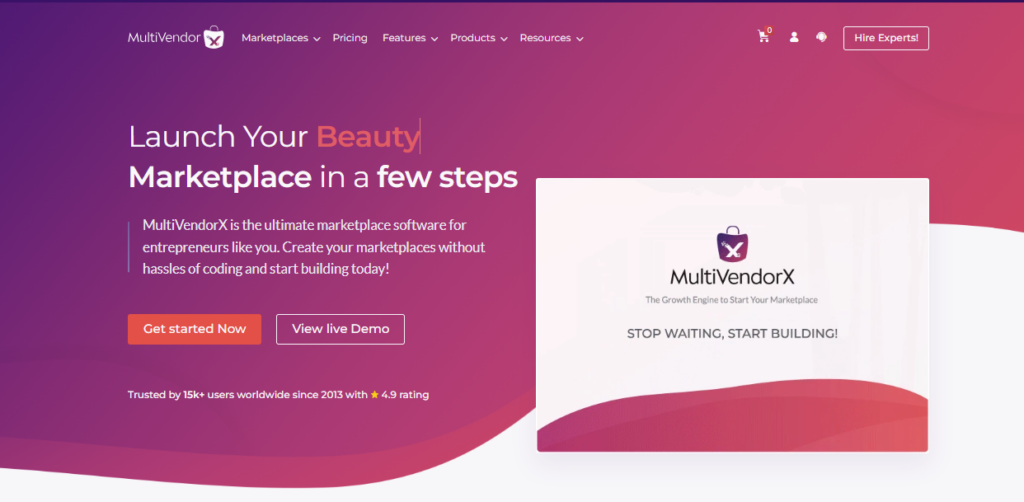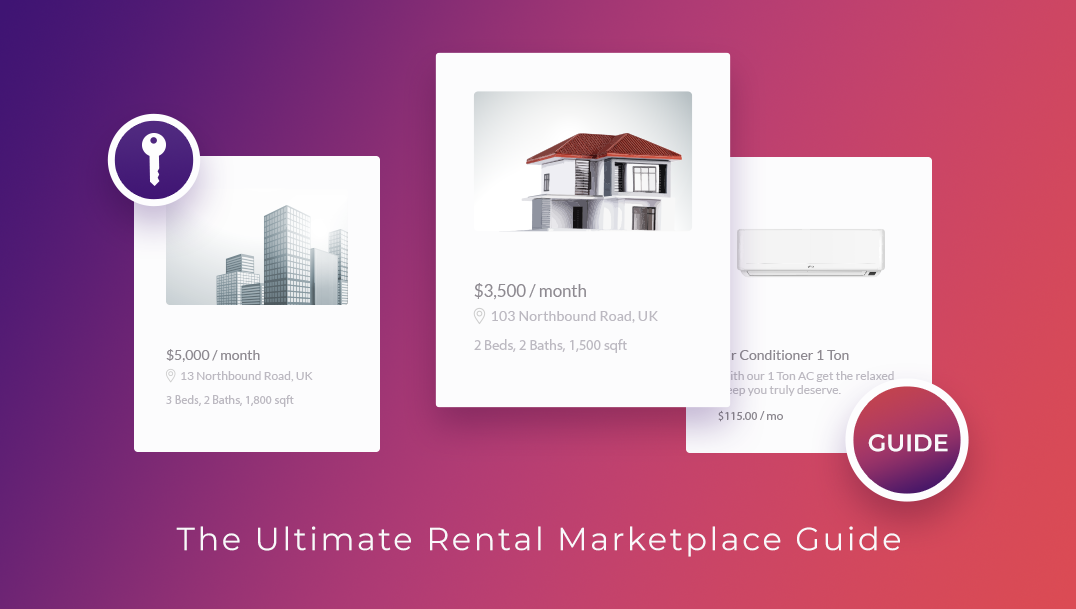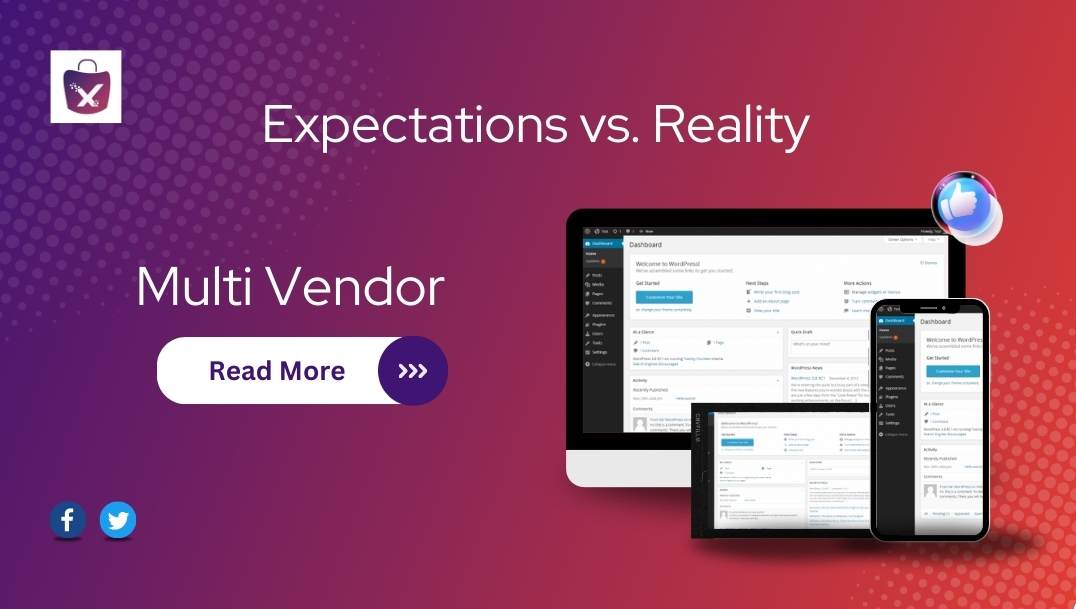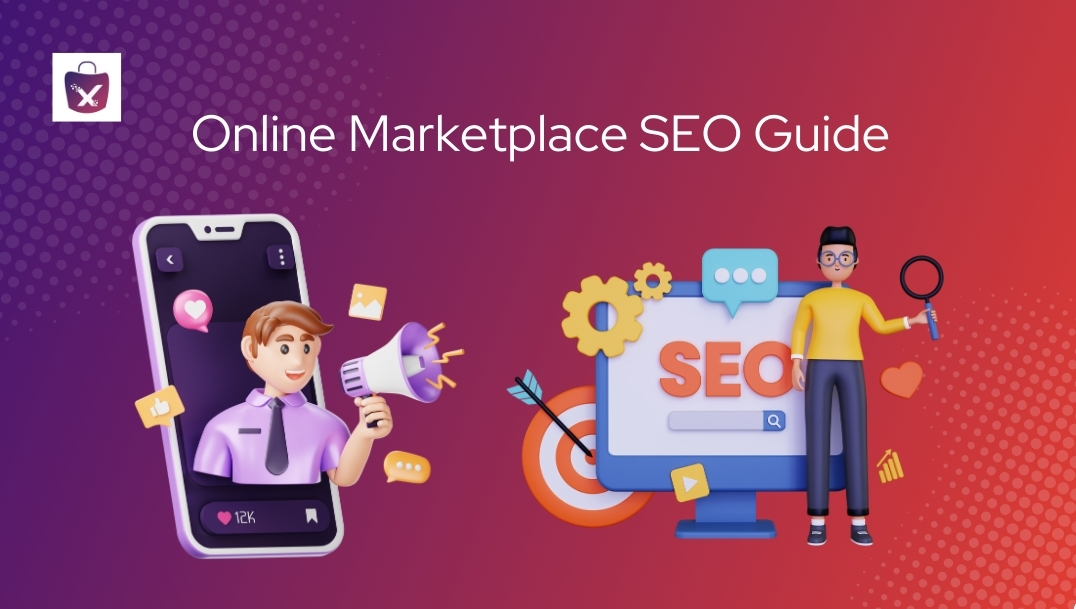
Most self-made entrepreneurs start small, but whether or not you choose to grow is a different matter altogether. Even the smallest of ideas can impact the world in unforeseeable ways. For instance, did you know that a $2,000 wedding dress gave birth to Rent the Runway, a famous clothing rental store in New York City? Jennifer Hyman came up with the glorious idea of renting her sister’s wedding dress because it was sending her into a credit card debt. Fast forward 12 years where she is now the CEO of one of the most successful clothing rental marketplaces in the US.
So how did that happen?
Like every great mind she had an idea. Jennifer recognized a problem where people were unable to use all the expensive clothing they owned. That wedding dress or tuxedo is just gonna sit in your closet collecting dust. Why not put it to good use?
She wondered, wouldn’t it be smarter if people could lend these designer items? Not only would they be helping others by providing expensive stuff at a cheaper rate. But they would also be generating passive income, and who doesn’t like some extra cash? And dedicated renters could always turn this into a full time business.
Jennifer saw the opportunity, and being the early bird, took the plunge. Now we are not saying you start clothing rentals right away. Although there is potential for future growth since, the online clothing rental market valuation is around US$ 1,861 million in 2021. However, there are plenty of boats at the dock. Let’s take a look and discuss which one you should choose for your great voyage!
Types of Rental Marketplaces
Some of the more distinct and profitable rental industries in the world are as follows:
Medical Equipment – Needless to say, the outbreak of Covid-19 peaked medical equipment sales. The medical devices market is even predicted to reach760 billion by the end of 2024. People are storming online marketplaces for healthcare, and you can be the one delivering it to them. Items such as ramps, cold therapy units, knee walkers, wheelchairs, hospital beds are some of the examples.
Example: Kwipped
Dress Rental – Dress rental was an already booming industry before the outbreak. Although it suffered a minor setback, the marketplaces are making a rapid comeback in 2021. It is expected to reach around US$ 2,143.8 million by the end of 2027.
Example: Rent the Runway, Stitch Fix
Gym Equipment Rental – Although gyms around the globe were starting opening their doors once again, the recent wave of the disease has once again put them in jeopardy. Therefore it wasn’t a surprise when gym owners started to rent their equipment to clients stuck at home. Thus, opening up a whole new industry that is still going strong to this day.
Example: FitDel, A.E.S Fitness
Vehicle Rentals – Vehicle rentals, including e-bikes and cars, remain a highly popular and profitable industry. The well-known car rental company, Turo, generated significant revenue in recent years. In 2023, Turo reported earning $500 million in revenues, reflecting the growing demand for vehicle rentals. As we move into 2024, Turo continues to expand its market presence and is projecting further revenue gains, anticipating an increase of around $150 million. This ongoing growth underscores the strong and sustained interest in vehicle rentals..
Example: Touro, EagleRider
Book Rental – Books offer a wonderful way to make the most of people’s extra time during lockdowns. With most physical bookstores closed and everyone encouraged to stay indoors, online bookstores are becoming the go-to solution for book lovers. A peer-to-peer (P2P) book rental marketplace can effectively connect book owners with readers looking for new titles. Unlike some other items, the demand for books remains steady during and after the pandemic.
Example – ValoreBooks, BooksScouter
Furniture Rental Marketplace – Before the Coronavirus pandemic, the furniture rental trend was growing steadily. While the pandemic has temporarily slowed its momentum, we anticipate that this trend will regain speed as people adapt to their new lifestyles and recognize the need for various types of furniture. In this context, online furniture rental marketplaces that can effectively meet customer demand will reap significant benefits. In fact, once the pandemic subsides and the global economy starts to recover, we expect the demand for furniture rental services to surpass previous levels.
Example – Fernish, CORT Furniture Rental
Now that you’ve chosen your niche, it’s time to expand upon it by thinking like a marketplace owner. So for instance, if you were the owner of a typical rental marketplace, what features would you require, what items could you sell in that genre, and how to get started?
Target Audience

Source: threegirlsmedia.com
The rental marketplace remains highly attractive to potential vendors, especially given the ongoing changes in consumer behavior and the increased demand for flexible and affordable options in 2024. Online rentals are becoming the new normal and in this section you’ll learn the type of people who are looking for such a marketplace.
- Health Equipment Suppliers- People have become more health conscious than ever over the past year. Home gyms are the new hype. Though it can be expensive to buy a bunch of gym equipment for a short period, it’s not the case if they are renting those items. It’s convenient as the rentees don’t have to bother with recurring gym memberships/registration fees. So if you’re looking to open a rental marketplace, targeting fitness equipment owners is a viable option.
- Clothing Rentals- Clothing businesses was and still is one of the most profitable rental marketplaces worldwide. The whole concept of Rent the Runway was built on people renting out expensive clothes.
Your Rental Toolkit
“Manners maketh the man”
– Gallahad, Kingsman The Secret Service.
Similarly, ‘features maketh the marketplace’. You can only create the perfect online rental marketplace when you have the features to support it. And, in this section we are going to discuss a few of them.
Rental Specific Tools
Now that we’ve discussed some generic features, let’s talk about features specific to a rental marketplace. This is important because rentals don’t work like normal products.
In the case of a normal multivendor marketplace, sellers add a product and refill them once they are finished. However, in the case of rental marketplaces you need to track your items to prevent consumers from booking things that are currently out-of-stock. Some rental-specific features include:
- Rental Product Manager– The rental product manager allows you to create rental products, attach inventories, manage availabilities, and more.
This is an example of what a rental product builder looks like. You can add dates, offer discounts, create labels, and various other additional services. The perfect way to start your rental marketplace is finally here.
- Quotation – In the context of a rental marketplace, a “quotation” refers to a detailed statement provided to a potential customer that outlines the estimated costs and terms associated with renting a specific item or service. This document or communication typically includes:
- Item Details: Description of the item or service being rented.
- Rental Duration: The period for which the item is available for rent.
- Cost Breakdown: A detailed list of all costs, including daily or weekly rental rates, additional fees, taxes, and any other charges.
- Availability: Confirmation of the item’s availability for the specified rental period.
- Terms and Conditions: Specific conditions related to the rental, such as security deposits, usage restrictions, return policies, and penalties for late returns or damages.
- Insurance Information: Details about any insurance coverage included in the rental agreement or options for additional coverage.
- Payment Terms: Information on how and when payment should be made.
A quotation helps the customer understand the total cost and terms before committing to the rental, ensuring transparency and allowing for informed decision-making. For the vendor, it serves as a formal offer that can lead to a confirmed booking once the customer agrees to the terms outlined in the quotation.
- Rental Calendar – A Rental Calendar in a marketplace allows users to view and manage the availability of rental items over specific dates. It offers a visual representation of booked and available dates, enabling renters to select dates for their bookings and vendors to manage their inventory efficiently. This feature enhances user experience by providing clear visibility into availability, facilitating seamless booking processes, and ensuring accurate scheduling for both parties involved in the rental transactions.
- Shipping– Many marketplaces entrust shipping services to their sellers, while others like Amazon take care of the entire shipping process. In case your vendors are asking to ship products by themselves, you can allow them to do so with this feature. Here is an example,
- Invoice– Every marketplace needs an invoicing tool. The more variables in the invoice, such as discount, subtotal, shipping cost, and payment method, the better. You should also be able to allow vendors to save up to 2-3 templates to help them quickly switch between them based on their customers. Here is an example of an invoicing tool.
- Coupons– Over 90% of consumers have used coupons in some way or another. Coupons play an important role in attracting customers, enabling you to cross-sell and promote products more effectively than ever.
- Live Chat– With customer attention span shrinking by the day, they need quick answers, now more than ever. They have numerous sellers pining for their attention and the ones that usually address their questions first gets the vote of confidence. Get your vote of confidence today with our chat feature.
- Location– Many rental marketplaces offer pickup and drop off in certain key regions. It helps ease shipping costs without applying any real burden on the customer. They usually have some pickup details and a drop off location on the store page, something which you can easily provide with MultiVendorX.
Generic Tools
- Vendor Dashboard– A vendor dashboard is like a headquarter, where your sellers get an eagle eye’s view of whatever is going on in their stores.
Such as store reports for the past 7 days.
Or a visitor’s map to better focus on their target audience.
The dashboard provides valuable information, allowing vendors to manage the entirety of their marketplace, and is thereby an invaluable tool when it comes to rental marketplaces.
- Storefront- Now this is a big one. Although customers mostly search by product names rather than individual stores, having a well organized storefront does have its benefits. For instance, look at the top brands. Despite having a website and making a name for themselves, Xiaoami maintains a clean and crisp storefront on Amazon. They have product descriptions, followed by recommendation and finally social media buttons.
You too can provide a similar experience to you seller’s where they can:
Share important contact information.
Do SEO, provide stock information and track page performance via Google Analytics.
- Policy section- Policies include shipping, return and support policies. They are important as they protect you and your vendors from unjustified and/or outrageous customer claims.
For instance, let’s assume a return policy of 10 days after which, no returns will be accepted. If this policy is not mentioned, customers can easily ask for returns anytime after the purchase date, be it a month, a year or a decade.
We have discussed the importance of policies in a later section, but, for now, here is how your sellers can simply add policies to their online stores.
- Vendor Payment – As the marketplace owner you’ll be one receiving the payment from customers. Once you’ve deducted your cut, you’ll be handing out the remaining amount to the vendors.
MultiVendorX offers the following options when it comes to commission disbursement. PayPal, Mangopay, Stripe, direct bank transfer, we’ve got it all covered. Simply choose an option from the following list to make it default for that particular vendor.
Offer your sellers the flexibility to receive payments on their own turf and gain their confidence in the long run.
How to get started on a marketplace?
Now let’s say that you’re enamoured by the concept of a rental marketplace and plan to build one. How would you go about achieving that goal? What should be your topmost priorities and where should you invest the majority of your resources?
Step 1- Pick your Niche
Firstly, you need an idea, a niche so to speak. It has to be something trendy and must be in demand. The best way to test out your ideas is by creating an MVP (minimum viable platform). Get your product out in the market and implement in-demand features as soon as possible.
- Clarify your goals and objectives.
- Write down your business plan.
- Study your target audience and the competition around them.
- Envision how your business will evolve in the future.
- Highlight your real competitive advantage.
- Get the proper license.
- Apply for funding.
Step 2- Learn to create your marketplace
While choosing the web development solution, you can either create your own marketplace website from scratch, or you can opt for readymade solutions that do everything for you. These platforms are fully customizable and come with basic features, with the optional perfect to get you started on your rental marketplace journey. You can always have more features once you’ve secured your footing within the industry.
Note that the cost of developing your marketplace can cost between $15,000 – $50,000 in 2024.Source
As you can see from above, creating your marketplace from the ground up isn’t cheap. Also it consumes one of your scarce resources i.e. Time. There are better options available in case you’re not prepared to invest that kind money, more on that later.
Step 3- Choose how to charge your sellers
Now it’s time to consider the pricing model. Look at Uber for instance. They implement something known as surge pricing or dynamic pricing, which increases the price of the ride during increased demands.
Uber raises rates to increase more cars on the road. You can try something similar. For instance, you can raise the cost of tuxedos during the wedding season so that more renters are willing to list the item.
Step 4- Provide the perfect vendor onboarding experience
Onboarding can be a messy and lengthy process based on the complexity of your marketplace. It is inefficient to address each and every struggling employee who is trying to list on your marketplace.
It is better to consult your sales team and arrange for demo videos that clearly explain the onboarding process, along with a dedicated F.A.Q. section which addresses most common problems.
Step 5- Ensure Product Safety with Insurance
Product safety is crucial for online rental marketplaces. What happens when a dress is damaged or some camping gear goes missing? How should you go about charging the rentee?
There are three possible ways you can resolve the issue.
- Security Deposit– You can charge a small security deposit that pays for damaged or stolen products. However, it only applies to cheap items. You cannot make enough security deposits for expensive items as it defeats the purpose of renting items.
- Terms and conditions– You can list it in your terms and conditions that customers will be proportionately charged for repairing or replacing any major damage done to the rented item.
- Insurance- Insurance is more suited to expensive items. You can partner with an insurance company to pay for any major damages on your items. In return, you can charge your customers a small fee as insurance premiums.
Step 6- Devise a fast and reliable shipping plan
Most cases it’s not possible to offer shipping services as it tends to significantly lower the profit margins. As a solution you can,
- You can ask vendors to take care of shipping themselves.
- Can offer paid shipping services(not possible over longer distances due to high shipping cost).
- Offer customers to collect the item themselves.
- Allow the vendor and customer to discuss a suitable shipping option.
- Provide shipping services yourself.
Step 7- Create marketing campaigns to promote your marketplace
“It’s not what you sell that matters as much as how you sell it!”
– Brian Halligan, CEO & Co-Founder, HubSpot.
Marketing is the key to success. You must have a definite approach and successful social media strategy to succeed in this day and age. Industry giants spend millions on marketing campaigns. Although it’s not feasible for you to do the same, you can take small steps to ensure your presence on the internet. More on this later.
The navigation bar must contain links to important categories as shown in the image. These categories may vary across genres, but the ultimate goal remains the same. Provide the customers a way to instantly browse whatever they desire.
- Subscription- Subscription is the highlight of Rent the Runway as it is the website’s apex revenue generation strategy. You can try offering something similar on your marketplace.
- Discover- Discover new items from latest arrivals and most popular community picks.
- Clothing- Choose from a wide range of dresses. Should contain a detailed set of filters to help the customers find exactly what they are looking for in your marketplace.
- Accessories- Look for accessories that go with your dress.
- Designer- Search dresses based on designer choices.
- Sale- Items that are on sale.
- Occasion- Occasional wear for parties, weddings outings, etc.
Allowing customers to freely roam your collection greatly improves engagement and enhances the overall user experience.
We have discussed everything on how to get started on your rental marketplace journey. Now it’s time to finally delve a bit deeper and discuss other marketplace requirements such as plan your business objective and expectations, analyzing the competition, defining user pain points and effectively addressing them.
Case Studies- Learn from Successful Models
Let’s compare two of the most popular clothing rentals in the market. In this section we will discuss what makes them unique, how they address customers needs and what makes success at the end of the day.
| Differences | Rent the Runway | Stitch Fix |
| 1. The Business Model | Rent the Runway serves trendy ladies who wish to borrow expensive designer goods at an affordable price. They offer one time rentals as well as subscriptions. | Stitch Fix serves as a personal stylist, curating high-end products for customers. They gather preferences and deliver clothes hand-picked by their designers. They also use data science to tailor each user’s shopping experience while considering trending style preferences. |
| 2. Annual Revenue | $100- $500M | $1.8B |
| 4. Target Audience | Individuals seeking to rent high value branded items at a cheap price. | Individuals looking for personal stylists who pick wardrobes on their behalf based on personal and preferences. |
| 5. Workflow Explained | a. The customer visits the website.b. They can either opt for subscriptions or one time rental.c. Customers can pick a dress and rent it for four to eight days.d. The dress arrives at the customer’s doorstep by 8am.e. At the end of the rental period the dress has to be dropped at a specified carrier by the customer.f. Subscription plans offer more flexibility. Members get free shipping and returns, no return dates, pick four styles at a time, and gain access to better quality items. | a. Customers visit Stitch fix.b. They have to go through a quiz.c. The quiz records a variety of variables relating to style preferences.d. The customer is then asked to pay a $20 stylist fee for that order or FIX.e. Customers can opt for automatic deliveries every two-three weeks, every month, every two months or every three months. Each time the customer will be charged a $20 stylist, which is non-refundable.f. The customer has a three day period to try out the dress.g. They can buy what they like and return the rest. |
| 6. Crucial Difference | Relies on subscriptions(offering multiple rentals without additional cost) as a main source of revenue. | Relies on surprise clothings based on personal preferences and tailored garments. |
Both renting marketplaces are successful in their own way. While one relies on customers picking their garments the other chooses data science and trend prediction to deliver a tailored experience to their target audience.
Marketing Tips
Marketing is the key to success for any business in existence. It has two primary goals:
- To build relations with your target audience.
- To plaster your brand’s image in the minds of your customers.
Before the dawn of social media, marketing was limited to pamphlets, commercials, billboards and the back of cereal boxes. However, in the 21st century, marketing has been redefined with the rise of social media.
Although you can spend a fortune plastering your commercial on every live screen. Provided it’s a good commercial that connects well with your target audience, you could see a massive upsurge in sales.
But what happens when you cannot afford that kind of budget? That’s where social media comes into the picture. Now, posting ads on the internet is also an expensive proportion, but you can get away with spending little, sometimes nothing at all. Let’s discuss some generic marketing tips, followed by specialized tips pertaining to the clothing industry.
Generic Marketing tips
- Videos- Hire a professional to create a video about your USP. your target audience may not have the time to consume written content. 82% of marketers say that video has better return investment than Google. Given the short attention span of people these days, a video is more likely to grab your target audience’s attention.
- Target audience- Set your sight on a fixed demographic. Are you targeting teenagers, working professionals, middle-aged people? Each group perceives the world from a different lens. They even use different social media apps and consume online content differently than others so plan accordingly.
- Get active on social media- Every leading business has a social media profile where they post periodically. Not not all businesses benefit from doing regular posts. Some prefer once per day while others get optimal results from posting 1-5 times per month. So, what is best suited for your online rental business?
According to Hubspot, organizations on Facebook with less than 10,000 followers received fewer clicks by posting 31-60 posts per month. However, companies with 10,000+ followers received increased clicks by posting 60 times per month. Work smart, not hard.
- Encourage customers to provide feedback- Instead of just relying on word of mouth advertising, you can actively take part in promotions. Follow up customer with emails asking for their reviews. Offer them gift cards or other promotional items in exchange for referrals. You can even host events and contests on social media, asking consumers to comment on your latest collections.
Return, Shipping and Support Policy
Return Policy
A.E.S Fitness – One of the known fitness rental marketplaces in the US.
It is not mandatory to have a return policy on your rental marketplace. But you expose yourself to a world of pain if you don’t have one. How?
Retailers without a Return and Refund policy in New York will have to accept returns and issue refunds for all merchandise returned within 30 days of purchase. Moreover customers prefer shopping/renting on marketplaces with clear rental policies. Over 91% of customers review Return & Refund Policy before making a purchasing decision. Here are some best practices for return policies:
- Make it easier to find.
- Mention exact dates and times. Avoid words like “by the end of the day”. Instead use “Return within 3 days”.
- Mention what happens if a customer wants to return on a Sunday(since postal services don’t work on weekends).
- Be flexible by offering both drop-off locations and delivery services FedEx.
- Show them how to return.
- Clearly explain the terms and conditions in case they fail to return on time.
Shipping Policy
Shipping policies are as equally as important as returns. Whether you’re charging them a fee or providing free shipping plays a major in online rentals. Did you know that 72% of consumers prefer online shopping simple because of free shipping? Customers are more likely to rent from your marketplace if you’re willing to provide free shipping.
Take a look at these best practices when it comes to shipping policies:
- Break down shipping details in a clear and concise chart. This includes shipping details, order processing and delivery time, domestic and international shipping options, shipping costs, pickup stores(if any) and, finally cancellation policy.
- You can also ask potential customers for their zip code when they first visit your marketplace, so that you can show them shipping charges right away.
- Offer free shipping in conjunction with additional discounts and benefits. For instance, ask customers to buy two or more products, or offer free shipping for a limited time.
- You can also offer free shipping coupons during special events.
Support Policy
Example: FitDel– Yet another rental marketplace within the fitness industry with a clear cut contact and support page for speedy solutions.
I once bought a software which ended up underperforming on my computer. As usual I filed for a return via mail and the support team got back to me within half an hour. I stated my problem, and they replied they understood my struggle. The person on the other end shared some tutorials that could speed up my computer. They also donated some credits(currency which could be used to buy additional services within the software) to my account as a compensation. Lastly, they added that I can send another mail if I was still willing to part with the software. Now what did I do? Keep reading to find out.
Takeaway:
- Provide quick support.
- Try to understand your customers’ pain points.
- Provide credits or coupons to maintain a positive relationship with your customers.
Support Policies are yet another major aspect of any rental marketplace. Display them in easily noticeable places. Be precise regarding the kind of support you’re willing to provide and the consequences should the customer breach any before mentioned policies.
96% of consumers state that customer service is important in their choice of loyalty to a brand. Therefore, make it as seamless as possible. Best practices include:
- Creating a F.A.Q section to address common queries.
- Creating a social media group to address newer millennials and Gen Z, who are the most active in these spheres.
- If your business is large enough, hiring a dedicated team to offer support services.
And, yes, I ended up keeping the software.
Why MultiVendorX?

Source: multivendorx.com
Do you want to create a fully-featured rental marketplace, without spending a single penny? Are you looking for a great support team with impressive turnaround time? If so, then look no further.
We know that developing a rental marketplace requires significant work. Our goal is to give you the tools that help you test out ideas without spending a fortune on them. Want to start a clothing rental business? Go ahead. We’ve added a few examples up top. Interested in renting out fitness items? Create an MVP to see how things go before investing in your startup.
We have the tools capable of bringing your visions to life. It’s true that we offer paid features, but they are NOT required to create a fully-functional multivendor marketplace. You can easily get by with our free services and pay for additional features once your business expands. Till then you’re free to use MultiVendorX as much as you want.






